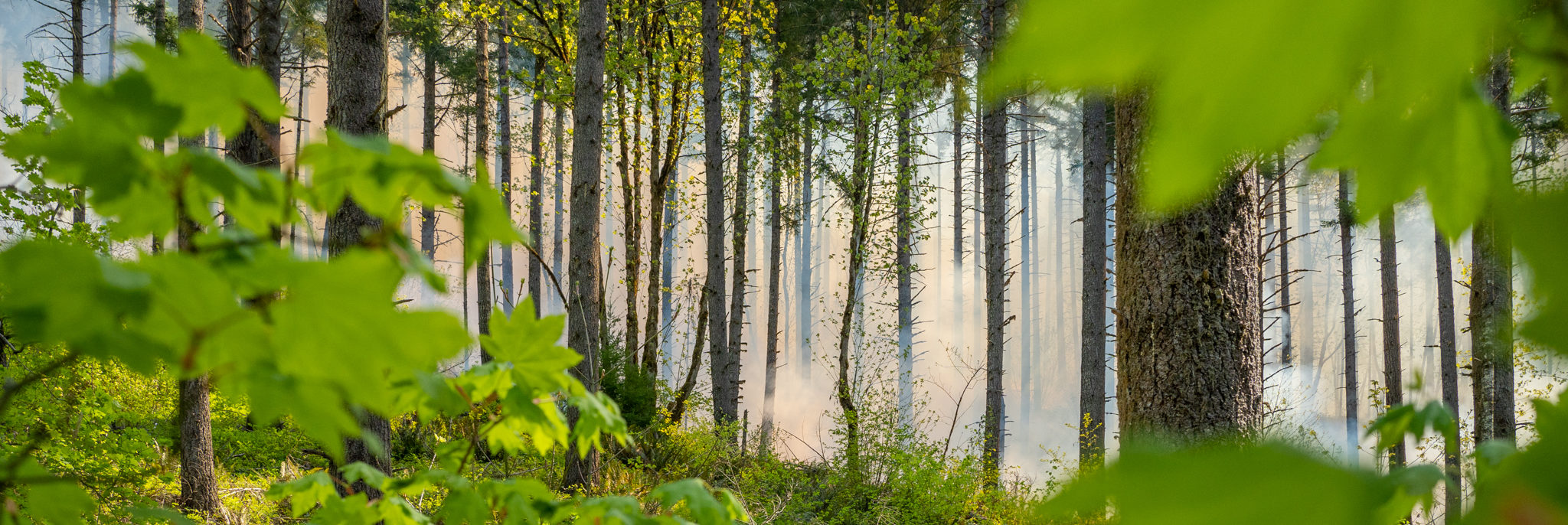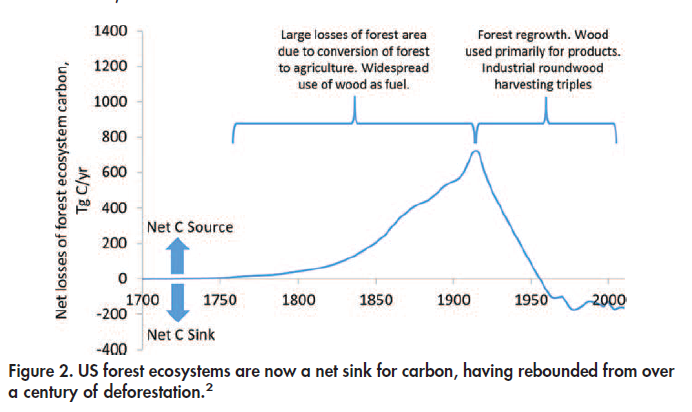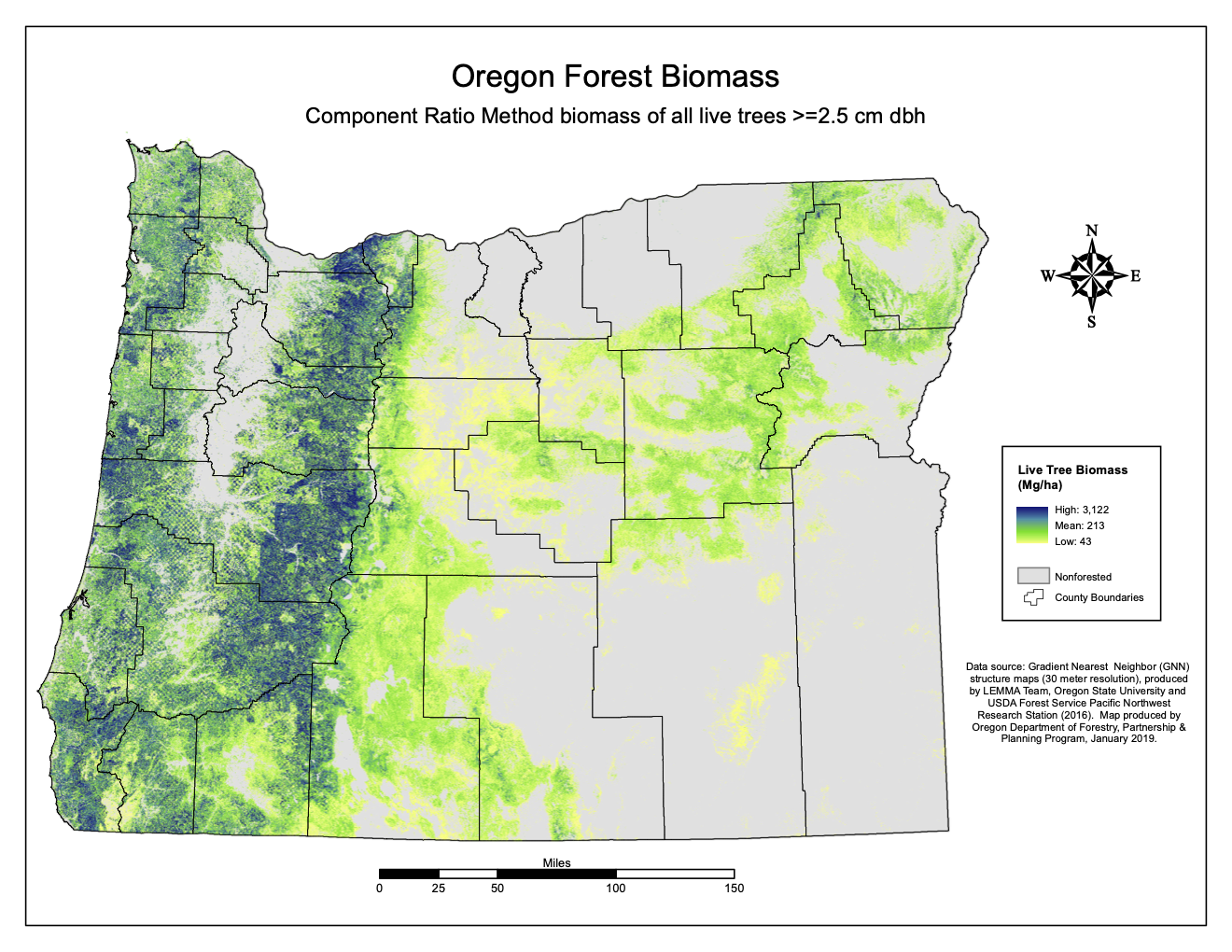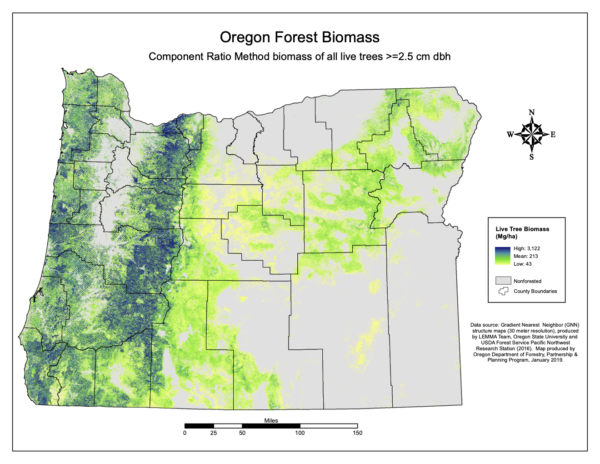
Home
Mass Timber Rising
Sustainable Forests
Tall Wood – Low Carbon
Fuels to Frame
About
Who Owns the Forest?
Threats to Forests – Deforestation
Stable and Growing Carbon Pools
The promise of mass timber comes from using our forests to construct tall wood buildings that displace fossil-intensive building products. By switching to wood, we store biogenic carbon in cities while leaving fossil carbon in the ground. But it only makes sense if forests and the carbon they store is stable or increasing. If we are losing forests without replacing them, that would decrease the benefits of building more with wood.
The scientific research is clear–forest sustainability underpins any effort to use forests to address climate change. A synthesis of peer-reviewed research in the Journal of Forestry states1,
“As long as land remains in forest, long term carbon mitigation benefits are derived from sustainably managed working forests that provide an ongoing output of wood and other biomass to produce long-lived products and bioenergy, displacing GHG (greenhouse gas)-intensive alternatives.”
So, let’s take a closer look.
In general, forestlands in the U.S. have been stable or increasing since about 1900. Prior to that, forests were cleared for agriculture and burning wood for fuel was widespread. But, as the country urbanized (and switched to fossil fuel), forest lands had an opportunity to rebound. After nearly two centuries of being a net carbon source (emitting more carbon than storage), U.S. forests became a net sink (storing more carbon than emitting) in the 1950s. They have been acting as a strong carbon sink since, sequestering about more than 11 percent of the economy’s emissions each year.
Source: Miner et al. (2014, August 29). Forest carbon accounting considerations in US bioenergy policy. Journal of Forestry. 112(6):591–606. http://dx.doi.org/10.5849/jof.14-009.
U.S. forests are currently stable nationwide, but this headline hides the fact forests still face numerous threats. According to the USDA, “wildfire, insects, and disease are among the biggest threats to forests and woodlands in the nation.” In fact, twice as many acres of U.S. forests are affected by natural disturbance (19 million acres or 2.7 percent) as are affected by tree cutting and removal each year (9.6 million acres or 1.4 percent). For example, since 2012, mountain pine beetles have damaged about more than 1 million acres each year.
This animation visualizes a steady flow of forest products and carbon storage at a forest level. Even as an individual stand is cut, the volume of the whole stand and its stored carbon remain stable.
The northwest states of Oregon and Washington are top lumber producing states. How do they stack up to these natural threats? Are forests in the region stable or increasing? The short answer is yes. The Pacific Northwest is home to the country’s most impressive stores of forest carbon. The lush temperate rainforests found on the westside of the Cascades constitute a large and growing carbon sink. The four Pacific coastal states contain 29 percent of live tree biomass across the country.3
Source: Oregon Department of Forestry
Both Oregon and Washington have expanding forest carbon stocks. According to the USDA Forest Service, Oregon’s forest carbon grew by 11 percent from 1990 to 2019 while Washington’s forest carbon expanded by six percent during the same decade.
The region’s forests are growing carbon while producing large quantities of wood products. But, the Pacific Northwest forests are very diverse and face a number of threats including wildfire, insects and disease and urban development. Mass timber construction is part of the demand for wood products that helps keep forests as forests. This provides forest landowners the revenue needed to address and respond to threats.
Who Owns the Forest?
Threats to Forests – Deforestation
Previous
Next



